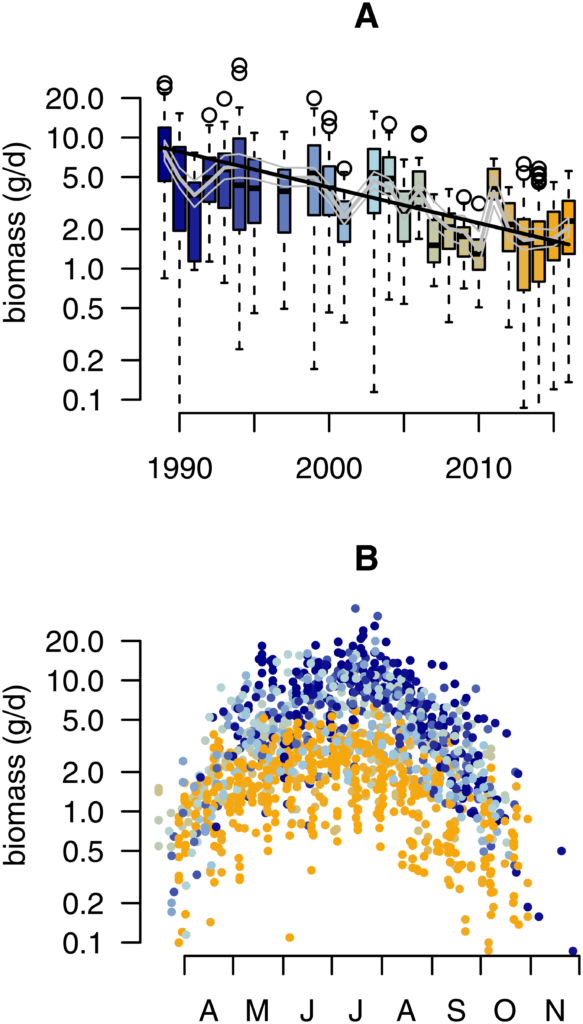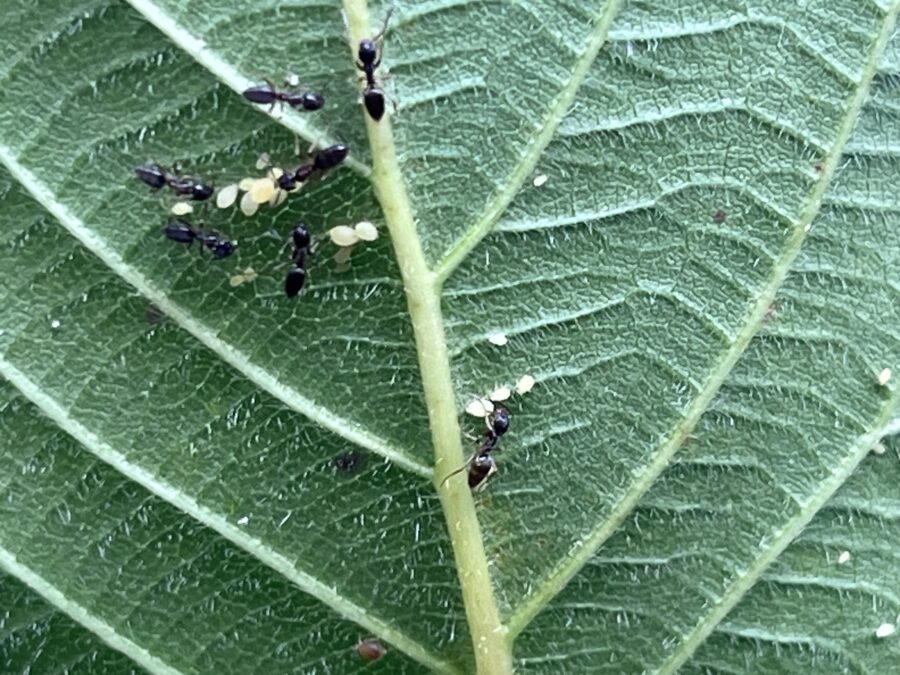In 2017, the efforts of a German nonprofit (https://www.entomologica.org/ento/index.html) put something unusual in the global headlines: insects. Meticulous data accumulated using traps that passively snare flying insects showed a decline of 76% in the insect biomass — the mass of all insects moving through the air over northern Germany — over a 27 year period.1 Newspapers the world over began running headlines about the “Insect Apocalypse”. In this case, the apparent hyperbole is justified. If insects really are declining precipitously, the consequences will be tremendous. Human food production is critically dependent upon insect pollination services, and insects form a large and essential component of terrestrial and aquatic food chains, with everything from birds to fish dependent upon insects. Remove the insects, and ecosystems collapse along with the services they provide us. Taking a step back, there’s a bigger picture to appreciate. Insects are the largest group of animals, comprising more than one half of all named species and roughly half the mass mass of all animals alive today.2 To a first approximation, the fate of insects just is the fate of animal life.

The insects are just one part — albeit the most diverse and numerous part — of the invertebrate animals. This group of animals includes a wildly variable panoply of worms, shellfish, snails, spiders, harvestmen, mites, and many others that play foundational ecosystem roles similar to insects. It includes millipedes and earthworms that process decaying matter in our soils, and the crayfish that clean the detritus from our streams. It includes the mussels that filter lake water, the aquatic snails that mow carpets of algae, and the wood lice breaking down your compost pile. And it includes myriad species that mutualistically support, or parasitize, or prey upon their fellow invertebrates and just about everything else that walks, swims, crawls, or flies. For most of these non-insect invertebrates, there is reason to worry that their populations are trending in the same direction as the insects given what little we know about the potential causes of insect decline. However, for just about every other sort of invertebrate we have no information about their long-term population changes.
Losing invertebrate species is bad, but losing numbers is bad too. To know how big of a problem we’re facing and what causes are driving the decline, we need detailed information about which populations of invertebrates are declining and how fast. Yet we know next to nothing about such invertebrate population trends globally.
What’s needed to see the signal through the noise is regular sampling of a wide variety of species occupying a range of ecological niches over a long period of time.
There are a variety of reasons for this. To begin with, most invertebrates have short generation times, and local populations vary a lot. This is certainly true of insects, which are known to show enormous population swings within a single season and from year to year. In all that natural variation, it’s difficult to discriminate a trend playing out on a timescale of decades. For example, for moths that can naturally vary by a factor of 10 from year to year, it’s extremely difficult to spot a downward trend of a couple of percentage points per year.3 Yet such a seemingly weak trend is enough to result in an 80% loss over a human lifetime.
Second, the diversity of insects, let alone invertebrates overall, is simply too vast to wrap our minds around. Even in temperate regions like Virginia, there are so many species of insects — somewhere around 20,0004 — that it would be impossible to estimate population changes for even a significant fraction of them. One must either choose a subset that are somehow representative, or measure coarse-grained features of whole communities, such as the total mass of flying insects that pass through a region.
Third, for any sort of ecological perturbation, there are bound to be winners as well as losers. Even if a wide variety of invertebrate species are facing steep decline, one would expect some others to prosper in the new regime because, for instance, of reduced predation or a lack of competition for a favored food resource. And indeed, that’s what the precious little data we have tell us — some species have increased in abundance over the same span of time as the great decline. That variability, however, makes it hard to see the big picture when we can only sample a small number of species at a time.
Similarly, there is wide geographic variation in habitat and disturbance, and thus there is potentially enormous variation in local population trends from place to place. We already know that this too is the case. The steep decline in overall flying insects in northern Europe is quite different from the modest gains of odonates (dragonflies and damselflies) in some of the US NSF Long Term Ecological Research sites (citation of skeptical paper).
Finally, we know that the factors impacting insect populations are numerous and varied. Each can have different natural timescales associated with it — some causing rapid and obvious population crashes, and others slowly reducing the viability of a population. That variation in long-term pattern makes the faint background signal beneath the annual boom and bust cycles of invertebrate populations even harder to detect.
That’s why VII is building a network of dedicated observation sites for gathering the kinds of data we desperately need.
The solution to all of these difficulties is time and volume. What’s needed to see the signal through the noise is regular sampling of a wide variety of species occupying a range of ecological niches over a long period of time. One or a few years — the typical time frame of a research grant — are not nearly enough. We need to think and measure in decades. Scientists around the globe have realized this, and are looking wherever they can for historical records spanning significant time.5 Looking forward, novel technologies are being developed to help secure the kind of information that we critically need to avoid ecological catastrophe.6 Such technology may make it easier for scientists, funding agencies, and government entities to find the will to sustain decades-long observation programs.
But what about Virginia? What do we know about long-term insect population trends? Almost nothing. In fact, aside from focused efforts looking at bees and butterflies, there little information of the right sort available for our continent. That’s why VII is building a network of dedicated observation sites for gathering the kinds of data we desperately need. In particular, the physiography of western Virginia offers an unusual opportunity to monitor invertebrate populations across four physiographic provinces, spanning a range of habitats and human disturbances. This will allow us to suss out the disparate effects of distinct stressors and geographic variation in trends. Each sampling site will use a variety of methods to count organisms from the soil, the surface, the water, and the air, conforming where possible to international standards and in all cases to a strictly repeatable protocol to make our data as widely usable as possible. Most importantly, the sites are designed with the long term in mind. Through easements and acquisitions, VII is securing rights to the land on which the sampling stations occur in order to guarantee that meaningful observations will continue to be made decades into the future.
…
References
- https://journals.plos.org/plosone/article?id=10.1371/journal.pone.0185809 ↩︎
- https://www.pnas.org/doi/10.1073/pnas.1711842115 ↩︎
- https://youtu.be/KtntoeN7jF8?si=ykD1j_InrNKECLHM ↩︎
- https://www.vmnh.net/content/vmnh/uploads/PDFs/research_and_collections/the_insects_of_virginia/the_insects_of_virginia_no_1.pdf ↩︎
- https://www.ncbi.nlm.nih.gov/pmc/articles/PMC7812824/ ↩︎
- https://doi.org/10.1016/j.tree.2022.06.001 ↩︎
